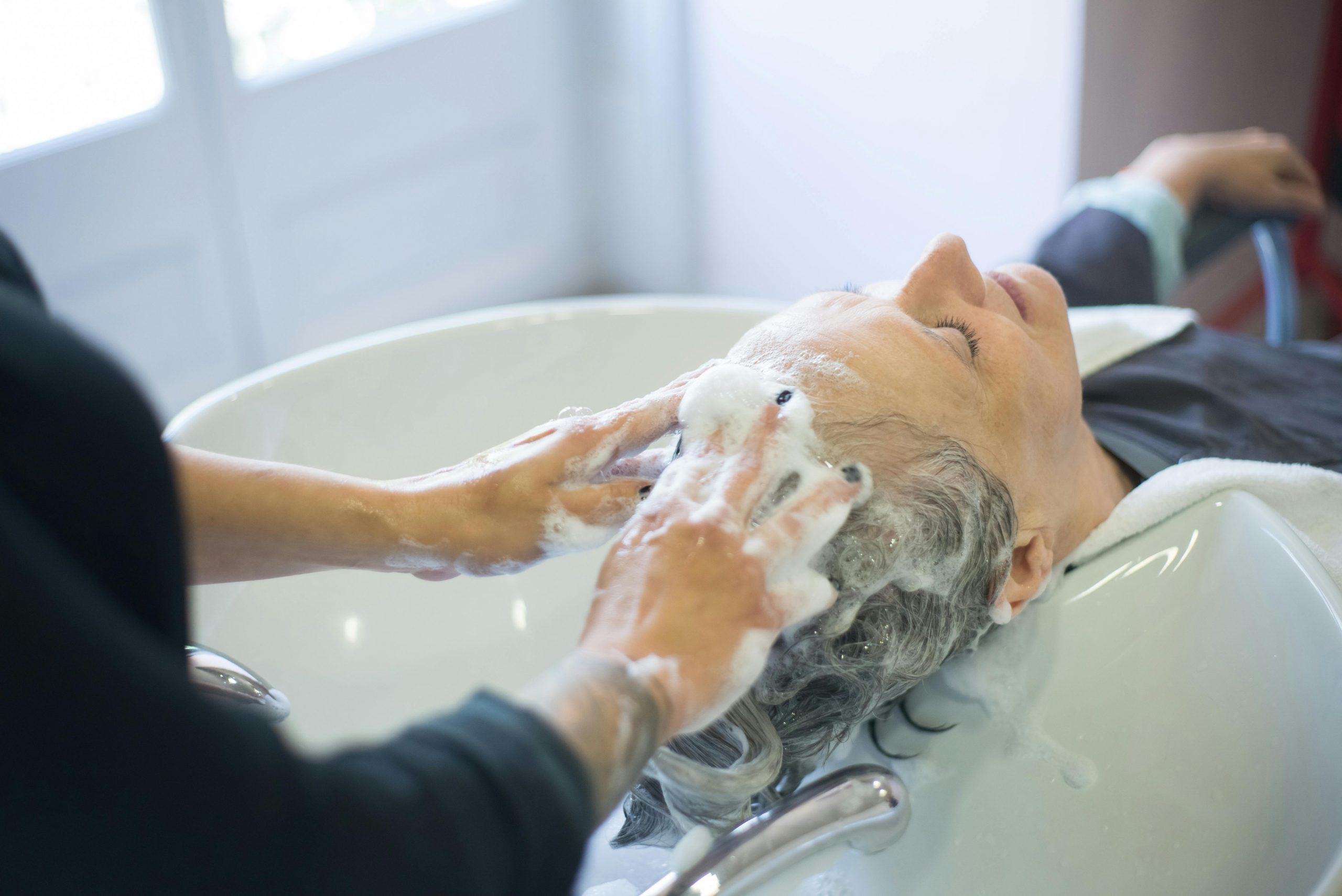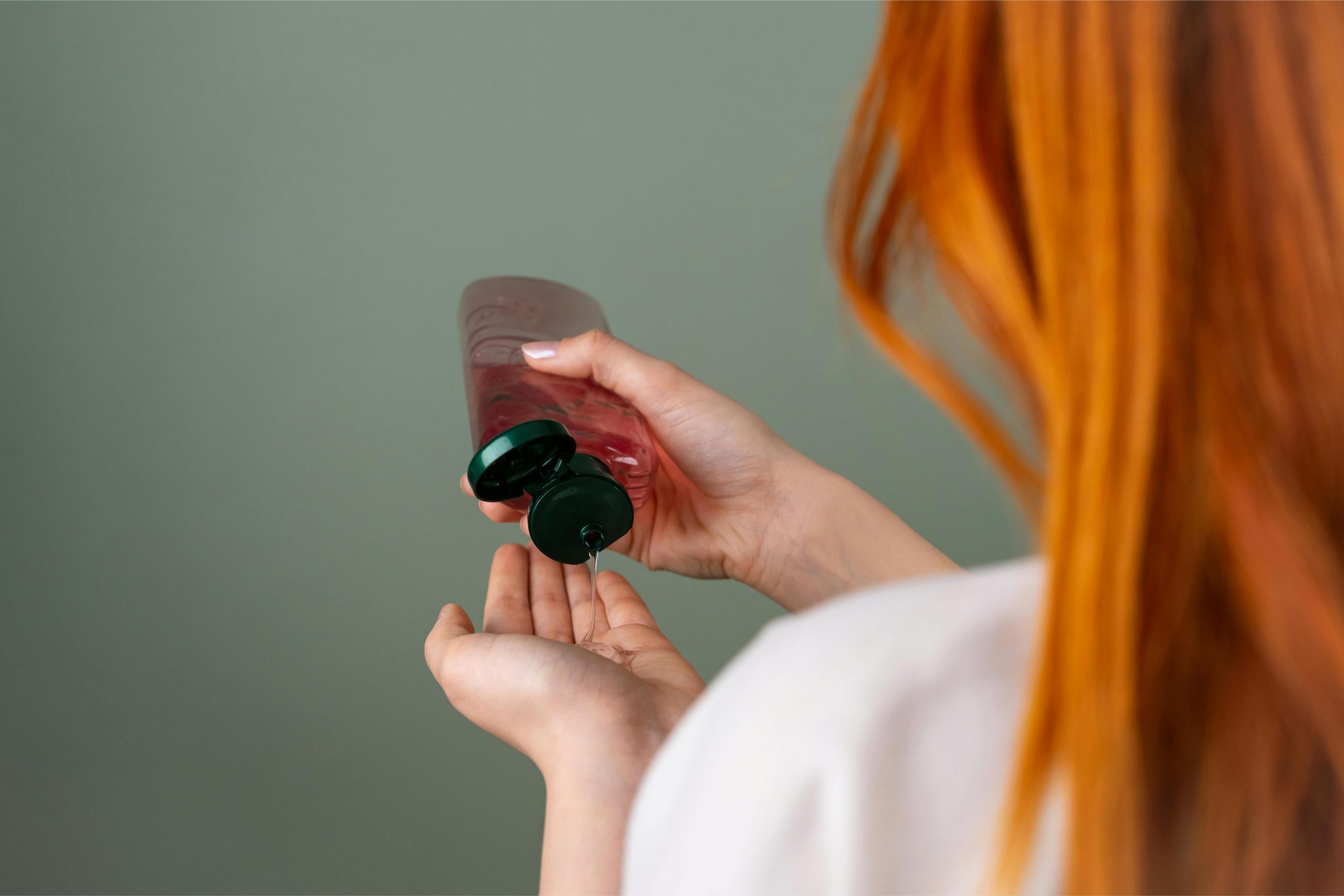
Washing your hair seems simple, but doing it correctly makes a big difference in its health, shine, and strength. Whether you have fine, curly, or color-treated hair, the right washing routine can keep your scalp balanced and your strands looking their best.
This guide breaks down how to wash your hair properly, explains what to use, and shares expert advice for every hair type.
Why Proper Hair Washing Matters

Your scalp is like the soil your hair grows from—keeping it clean and healthy supports strong, beautiful strands. Washing your hair isn’t just about removing dirt or oil; it’s also about balancing natural oils, preventing buildup, and maintaining hydration.
When done correctly, washing your hair:
- Removes impurities such as dirt, sweat, and styling products.
- Stimulates the scalp, promoting blood flow and healthy hair growth.
- Prepares your hair for conditioner and treatments to work effectively.
- Prevents scalp issues, including dandruff and irritation.
Overwashing, however, can strip away natural oils and lead to dryness or frizz. The key is balance—using proper products and techniques suited to your hair type.
Step-by-Step: How to Wash Your Hair Properly
A proper hair wash involves more than just shampoo and rinse. Follow these steps to make the most out of your wash day:
1. Detangle Before Washing
Before stepping into the shower, gently detangle your hair using a wide-tooth comb or detangling brush.
- This prevents breakage and reduces tangles when wet.
- Apply a small amount of leave-in conditioner or detangling spray for easier brushing.
2. Use Lukewarm Water
Hot water may feel relaxing, but it strips the scalp of natural oils.
- Lukewarm water helps open cuticles for better cleansing without causing dryness.
- Avoid cold water at first—it won’t remove buildup effectively.
3. Choose the Right Shampoo
Select a shampoo based on your scalp type rather than your hair length.
- Oily scalp: Use a clarifying or balancing shampoo.
- Dry scalp: Choose a moisturizing or sulfate-free shampoo.
- Sensitive scalp: Opt for gentle, fragrance-free formulas.
4. Apply Shampoo Correctly
Pour a small amount of shampoo (about the size of a quarter) into your palm.
- Focus on your scalp and roots, not the ends.
- Massage gently using your fingertips (not nails) for 1–2 minutes.
- Allow the lather to naturally cleanse the rest of your hair as you rinse.
5. Rinse Thoroughly
Make sure all shampoo is completely rinsed out.
- Any residue left behind can weigh hair down and cause buildup.
- Use lukewarm water to keep your hair soft and manageable.
Conditioning After Shampoo

Conditioning is essential after every wash—it restores moisture, adds shine, and protects your hair from future damage.
How to Apply Conditioner Properly
- Squeeze out excess water before applying conditioner to help the product absorb better.
- Apply from mid-lengths to ends, avoiding the scalp unless it’s a hydrating formula for dry hair.
- Leave on for 2–5 minutes, depending on your hair type and product instructions.
- Rinse with cool water to help seal the cuticle and lock in shine.
💡 Tip: If you’ve ever wondered how often should you condition your hair, the answer depends on your hair type—fine hair may need light conditioning every other wash, while thick or curly hair benefits from conditioning after every shampoo.
How Often Should You Wash Your Hair?
There’s no one-size-fits-all answer—it depends on your scalp condition, hair type, and lifestyle.
- Oily hair: Wash every 1–2 days to control oil and prevent buildup.
- Normal hair: Every 2–3 days is usually enough to keep it fresh.
- Dry or curly hair: Washing once or twice a week helps preserve natural oils.
- Color-treated hair: Limit washing to 2–3 times a week to prevent fading.
If you exercise frequently or live in a humid environment, you might need more frequent washing—but always follow with conditioner to replenish moisture.
Common Mistakes to Avoid When Washing Your Hair
Even small habits can affect your hair health. Avoid these common washing mistakes:
- Using hot water: Causes dryness and dullness.
- Scrubbing too hard: Damages your scalp and weakens follicles.
- Applying conditioner to roots: Can make your scalp greasy and flatten hair.
- Skipping rinsing: Residue buildup leads to irritation and limp strands.
- Washing too often: Strips hair of its natural protective oils.
Taking a gentle approach helps maintain your hair’s natural balance.
How to Wash Different Hair Types
Every hair texture has unique needs. Tailor your washing routine to match your type:
1. Straight Hair
Straight hair tends to get oily faster because sebum travels easily down the shaft.
- Wash: Every 2 days or as needed.
- Shampoo: Use lightweight formulas.
- Conditioner: Focus on the ends to avoid weighing hair down.
2. Wavy Hair
Wavy hair requires balance—it can get oily at the roots but dry at the ends.
- Wash: 2–3 times per week.
- Shampoo: Use sulfate-free cleansers.
- Conditioner: Apply mid-length to ends for softness and bounce.
3. Curly Hair
Curly strands need extra hydration to prevent frizz and breakage.
- Wash: Once or twice a week.
- Shampoo: Use moisturizing or co-wash formulas.
- Conditioner: Leave in for at least 5 minutes before rinsing.
4. Coily or Kinky Hair
This hair type benefits from minimal washing and deep conditioning.
- Wash: Every 7–10 days.
- Shampoo: Choose sulfate-free, hydrating cleansers.
- Conditioner: Deep condition weekly to maintain elasticity.
Choosing the Right Products for Healthy Hair
The products you use directly influence your hair’s condition. Here’s how to select the right ones:
Shampoos
- Look for sulfate-free formulas to reduce dryness.
- Choose clarifying shampoos once a month to remove buildup.
- Use color-safe options if you dye your hair regularly.
Conditioners
- Moisturizing conditioners are best for dry, curly, or damaged hair.
- Lightweight conditioners suit fine or oily hair.
- Leave-in conditioners help with detangling and protection.
Extra Treatments
- Hair masks: Deep hydration once a week.
- Serums or oils: Apply a small amount to ends after drying.
- Heat protectant sprays: Essential before using styling tools.
Post-Wash Haircare Tips
Proper aftercare keeps your hair looking salon-fresh even between washes.
- Pat dry with a microfiber towel or cotton T-shirt—avoid rough towels that cause frizz.
- Detangle gently starting from the ends upward.
- Air-dry whenever possible to minimize heat damage.
- Use a heat protectant before blow-drying or straightening.
- Avoid tight hairstyles that pull on the scalp when your hair is wet.
Signs You’re Washing Your Hair Correctly
You’ll know your washing routine works if:
- Your scalp feels clean but not tight or dry.
- Your hair looks soft, shiny, and manageable.
- You experience less frizz and fewer tangles.
- You don’t need to use dry shampoo constantly between washes.
If your hair feels greasy, heavy, or frizzy after washing, it’s time to adjust your products or frequency.
Final Thoughts
Knowing how to wash your hair properly is one of the simplest yet most powerful ways to improve your hair’s overall health. By using the right techniques, products, and timing for your hair type, you can maintain a clean scalp, prevent damage, and enhance shine naturally.
Washing your hair isn’t just about cleanliness—it’s about giving your strands the care and attention they deserve. Follow this guide, listen to your hair’s needs, and you’ll enjoy healthy, vibrant locks every day.



